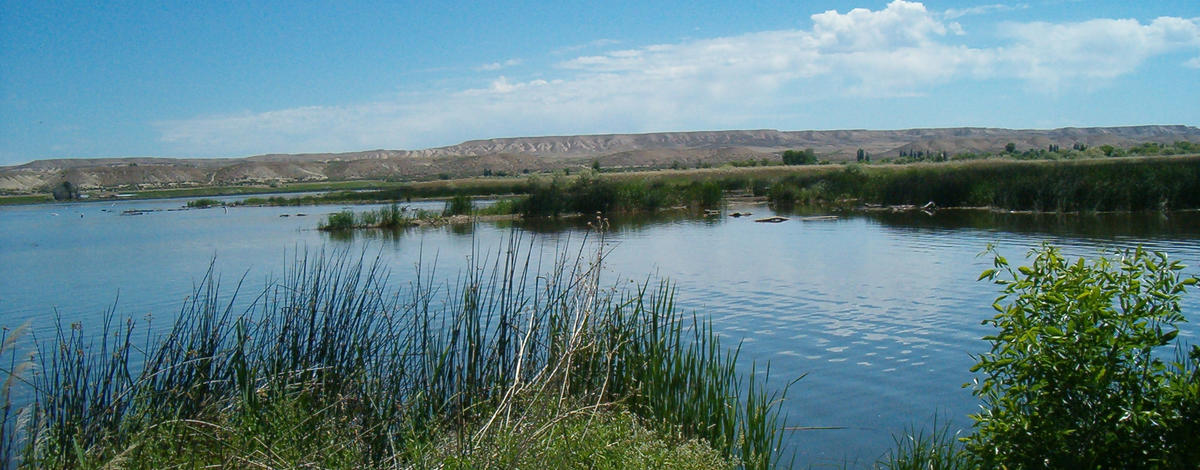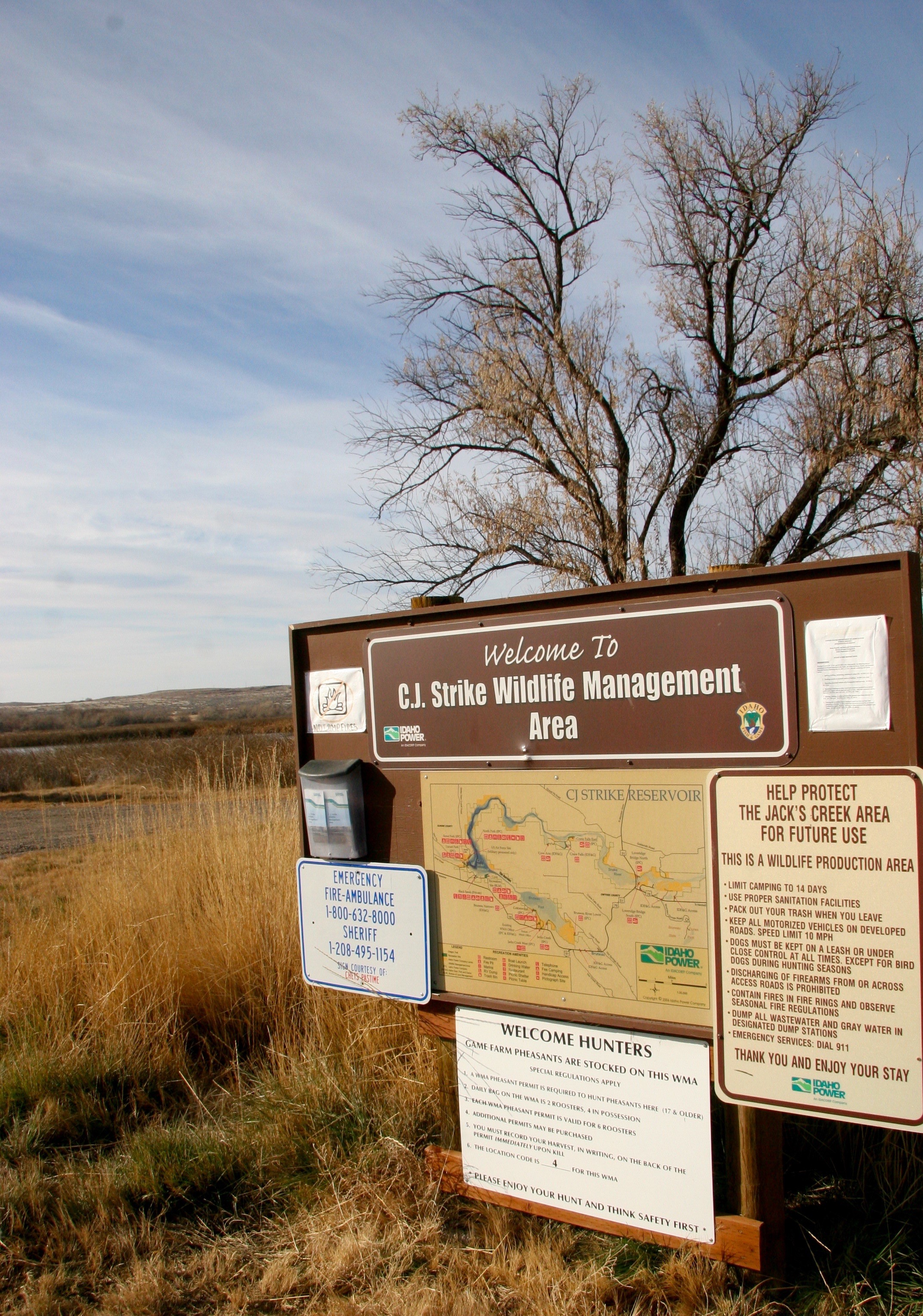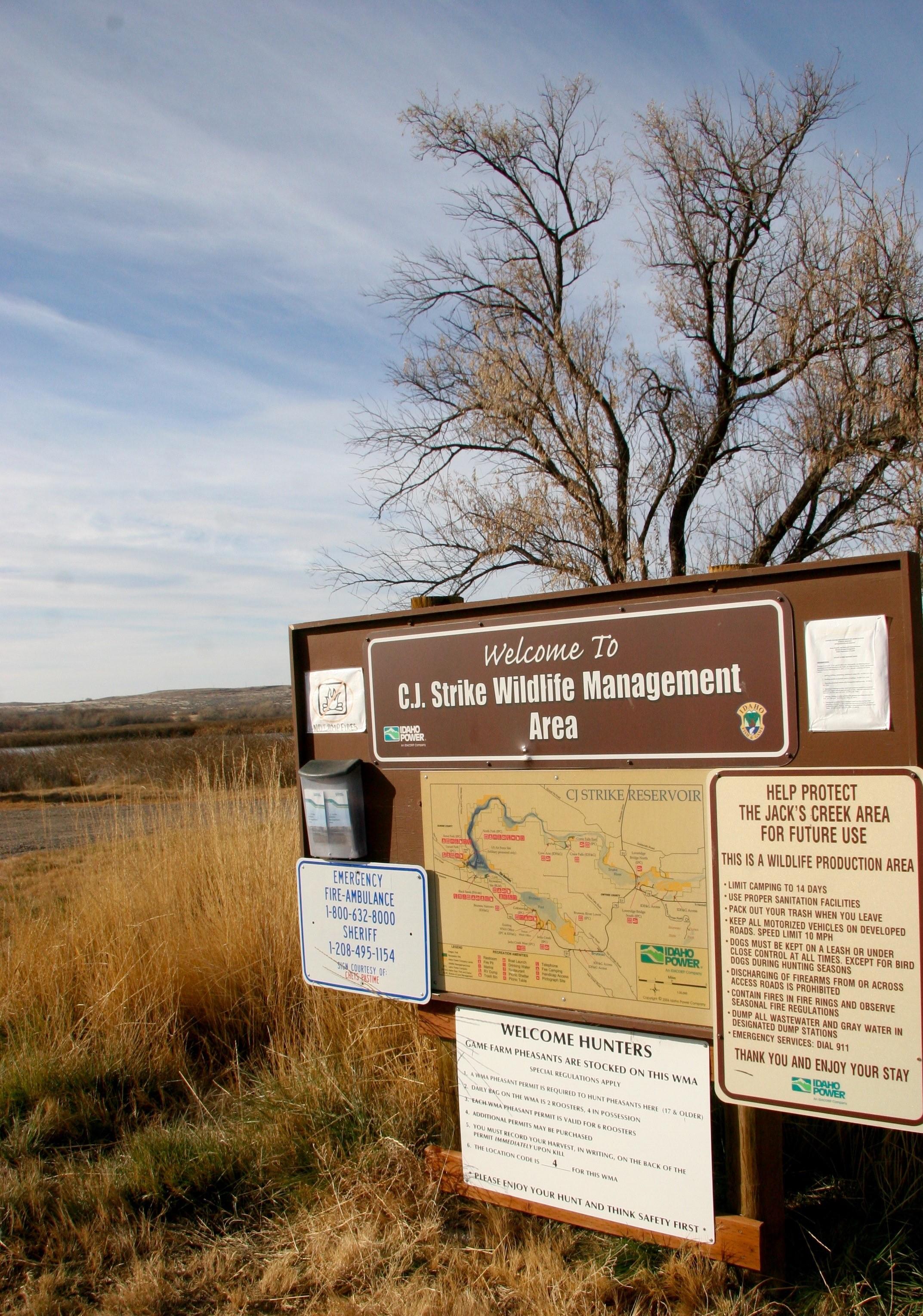The WMA was formed in 1953 when Idaho Power Company granted authority to Idaho Fish and Game to manage most of their lands with the C.J. Strike Dam project area. The WMA is managed with priority on hunting, fishing, and trapping, as well as wildlife production and wildlife viewing. Multiple partners – U.S. Fish and Wildlife Service, Idaho Parks and Recreation, Bureau of Land Management and selected neighboring landowners –
provide oversight in managing the WMA properties.
The WMA is divided up into seven management segments: Trueblood, Borden Lake, Bruneau, Crane Falls, Hot Springs, Indian Cover and Loveridge. Each segment has unique habitat and management priorities.
- The Trueblood segment is managed for waterfowl production and public hunting access. A viewing platform can be found on this segment. The property surrounds a 40-acre private pond with two access easements.
- The Borden Lake segment is adjacent to the C.J. Strike power plant and developed campsites.
- The Bruneau segment largely consists of the Bruneau arm of C.J. Strike Reservoir and Bruneau delta. This area sees heavy public use.
- The Hot Springs segment consists of agricultural, wetland slough, and uplands, and is surrounded by private lands used for livestock and agricultural production.
- Indian Cove segment provides public access to the Snake River.
- The Loveridge segment is withdrawn BLM land and is managed for public use and wetland values. A 150-acre location at Loveridge Bridge is used for bird dog field trials and training between August 1 and September 30. Permits are required and can be obtained at the Southwest Regional office in Nampa.
When C.J. Strike Reservoir filled, seepage from the reservoir filled an 80-acre basin on the south side of the Snake River, which is now Crane Falls Lake. This lake was stocked with rainbow trout in 1954 and soon became a trophy trout fishery. The lake has since evolved into an excellent warm-water fishery in combination with the rainbow fishery.
There are few internal roads open to public vehicles due to terrain, habitat needs, and safety. The roads that are available lead to specific parking areas on the WMA. Each driver needs to assess their vehicle's ability, as some roads are rougher than others. Driving beyond the parking areas is not permitted.



